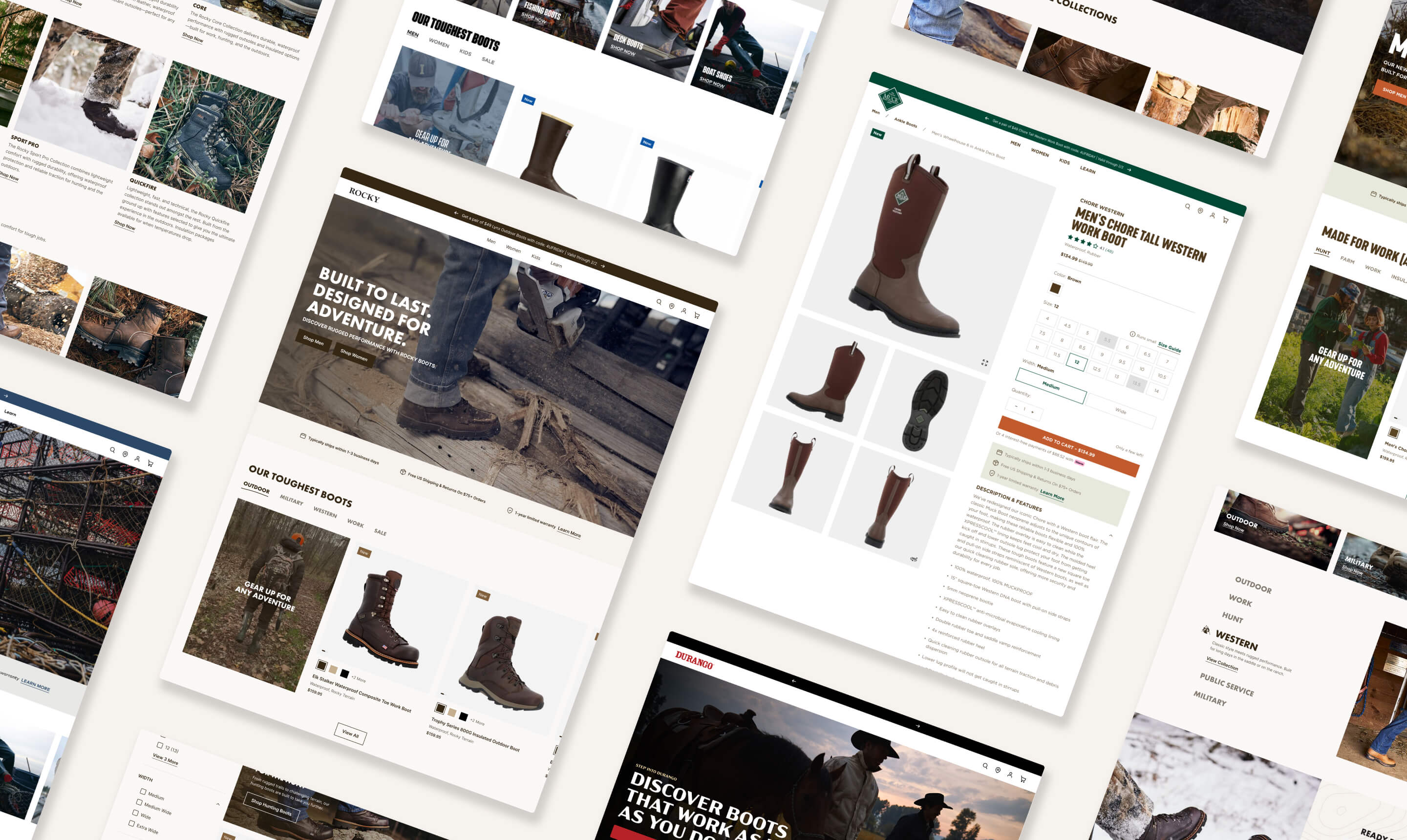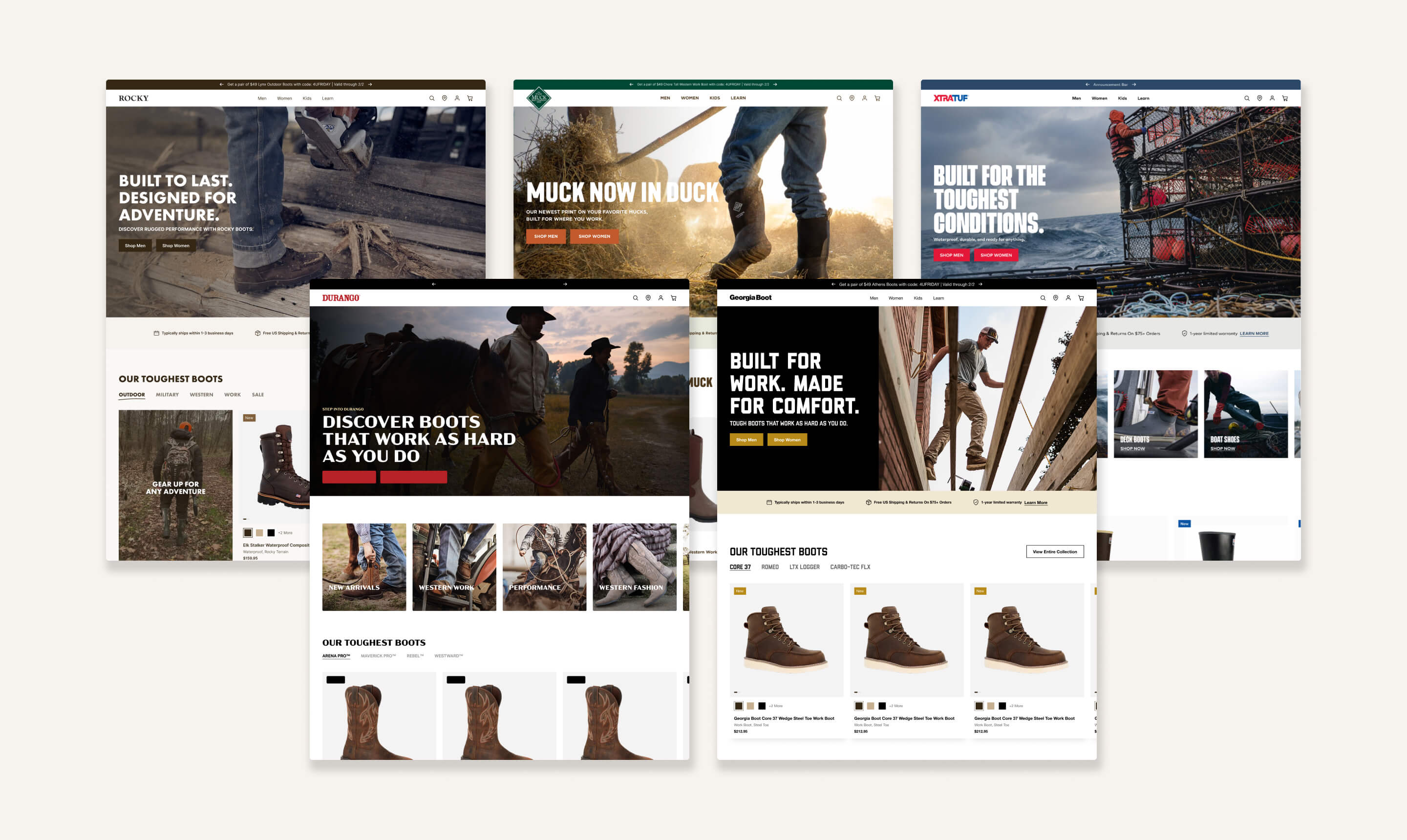A custom multi-brand Shopify platform built to scale. See how we helped Rocky Brands streamline operations, unify nine distinct storefronts, and deliver a seamless customer experience across its premium footwear portfolio.

Successfully unified a diverse portfolio of storefronts within a single, scalable Shopify ecosystem.
Reusable components and a streamlined backend give internal teams more speed and flexibility.
A future-ready architecture that adapts to evolving business needs, product lines, and customer expectations.


Seamless Multi-Brand Experience: We created a unified customer journey that allows shoppers to easily navigate between brands. Thoughtful UX, intuitive navigation, and a streamlined checkout flow help increase engagement and drive conversions across the entire portfolio. Each brand, whether it’s the heritage craftsmanship of Rocky, the rugged durability of XTRATUF, or the iconic style of Durango, maintains its own look and voice. A shared design system ensures cohesion while allowing every brand to shine on its own terms.
Scalable, Modular Architecture: Built on a flexible Shopify framework, the platform features reusable components, a shared design system, and an efficient backend setup. This allows internal teams to launch campaigns faster and maintain consistency without extra overhead.
Optimized for Performance: Speed and reliability were top priorities. We implemented best practices for code, hosting, and third-party integrations to ensure fast load times, reduced friction, and a stable experience across devices.
Data-Driven UX Decisions: We conducted brand audits, customer interviews, and competitive research to inform key decisions around structure, content, and design. Every aspect of the experience was built with real customer behaviour and business goals in mind.
ERP Integration: We consulted and advised Rocky Brands’ enterprise resource planning (ERP) system with Shopify Plus to streamline operations across brands. This integration enabled real-time data flow between the storefront and backend systems, enhancing operational efficiency.
Product Information Management (PIM): To handle the complexity of multiple SKUs across various brands and styles, a centralized PIM solution was integrated. This allowed consistent and accurate product data across all storefronts, reducing manual effort and errors.
Inventory and Order Management: The updated architecture included robust systems for inventory and order management, ensuring accurate stock levels and faster fulfillment. Orders were routed efficiently based on availability and location, improving customer satisfaction and operational reliability.


Consistent Multi-Brand Experience: Each brand now benefits from a cohesive user journey that preserves its unique identity while contributing to a unified ecosystem.
Improved Speed and Performance: Faster site speed, improved reliability, and enhanced usability help reduce bounce rates and increase conversions across devices.
Centralized Operations: A shared backend with ERP and PIM integration simplifies management, giving teams greater control over content, product updates, and campaign launches.
Reusable Design System: Scalable design and development components make it easy to maintain consistency and roll out changes across multiple storefronts, saving time and resources.
Future-Ready Infrastructure: A flexible, scalable foundation supports portfolio expansion, faster product launches, and future acquisitions.

Keep exploring and discover more projects and the impact behind them.